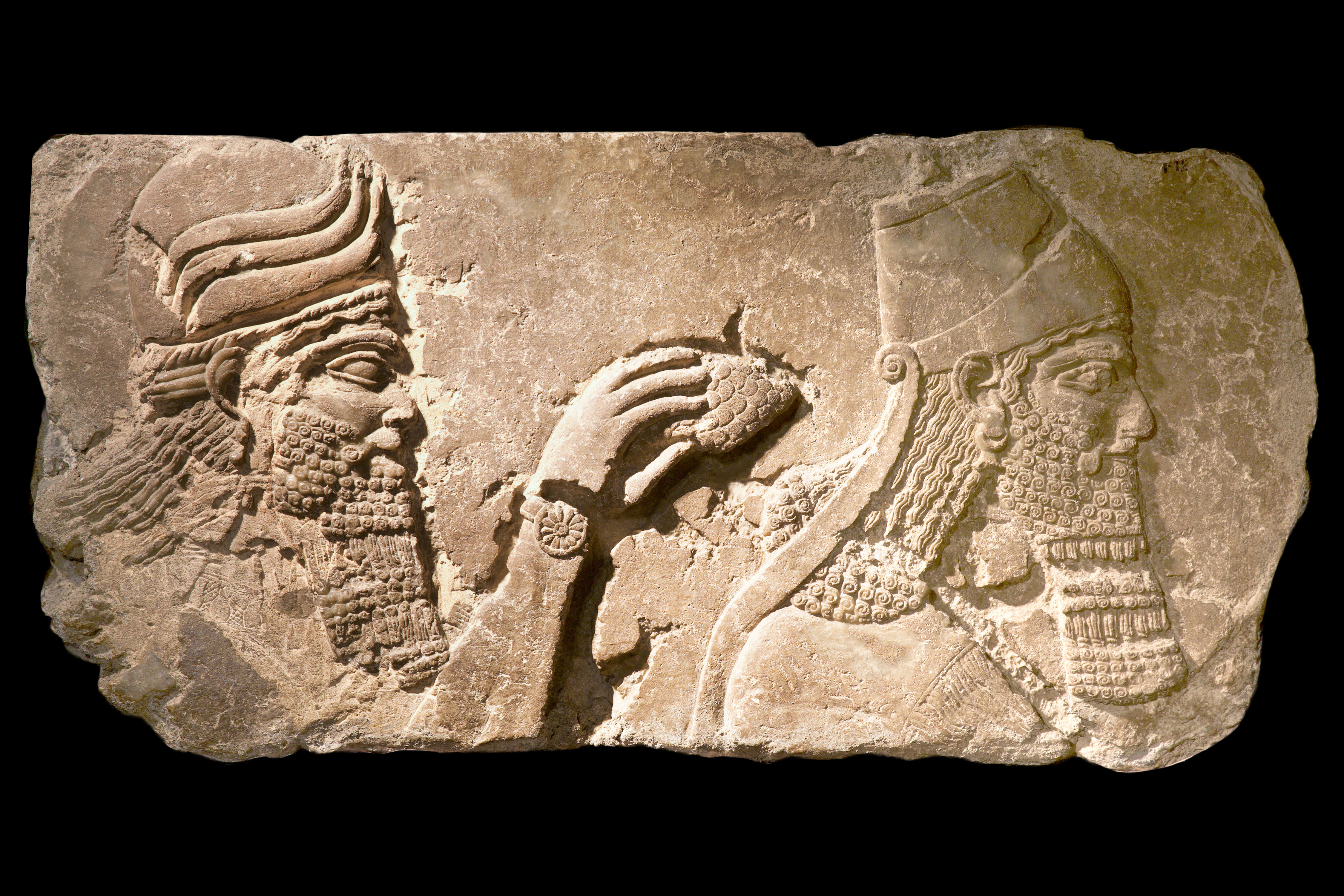Discover, Learn, immerse, Connect
Ashurnasirpal II and Assistant
The present collection of reliefs from Ancient Assyria (c. 900–600 BCE) at the museum comprises of 12 alabaster reliefs from Nimrud. Of them, 8 are from the palace of Ashurnasirpal II, 3 from the central palace of Tiglath-Pileser III and one from the palace of Sargon II at Khorasabad. Out of these, 10 slabs were gifted by the British resident at Baghdad, Henry Rawlinson to the Governor of Bombay, Sir George Clerk in I847 who in turn gifted them to the city of Bombay in 1848. These were prominently displayed in the Economic Museum which existed inside the Town Hall in Bombay throughout the 1850s, and are now housed in the Chhatrapati Shivaji Maharaj Vastu Sanghralaya (CSMVS). There are two extra objects. These may belong to the shipments of antiquities of ancient Assyria from Basra which were on their way to London between 1846 and 1848. The objects were found during the excavations by the British explorer and diplomat Henry Austen Layard at Nimrud (near Mosul, Iraq). The Asiatic Society of Bombay took the chance of displaying the antiquities. Layard later accused Bombay of vandalism and theft of his objects which was strongly refuted. As the reports of The Bombay Times and Journal of Commerce reveal, The Asiatic Society took great care and had received the objects with enthusiasm and scholarship.
The exhibit of Nineveh in Bombay in the 1850s was linked with the constant demands made by the inhabitants of the city for civic amenities. Hence, in 1855 a group of citizens demanded that "the streets and alleys of Bombay be surveyed and laid down with something like the fullness and precision with which the capital of Assyria had been represented." However, the powerful presence of Nineveh in Bombay during the 1850s has left very few visual imprints within the architectural fabric of the old city. Another culturally important fact that emerged was the difference in perspectives in Britain and India while viewing the Assyrian reliefs.
While in Britain, by the mid-1850s, the Assyrian artefacts were derided as representations of ‘bad art,' whereas in Bombay, the objects were viewed differently. For example, a journalist for The Bombay Times and Journal of Commerce described many ‘Indian features’ within the exhibits, like an armlet corresponding to ‘lower class male Hindoos,' swords resembling those of the ‘Maratha sirdars’ and Muslim rulers etc. Also, it is to be noted that the citizens of Bombay in the 19th century were the first to see the splendour of Ancient Assyria. It was only later that the artefacts were displayed in London and Paris. It is true that the visual histories of Nineveh in Bombay do not appear within the European narratives of the archaeological discoveries of Ancient Assyria. However, the looming presence of Bombay within the travails of the artefacts’ journeys across the seas illuminates the growing cosmopolitan ambience of the Indian port city, which by the 1840s had attained pre-eminence as the facilitator of international commerce.
 Government of India
Government of India



